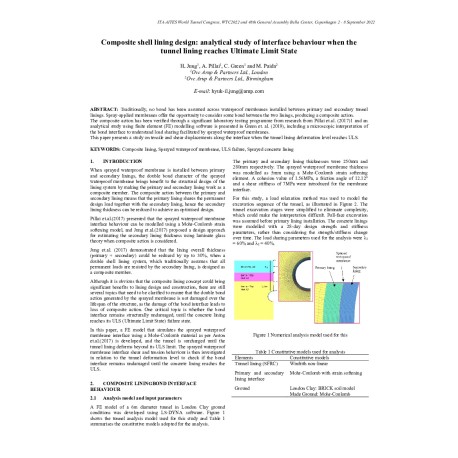Cart
0
0
No document
0,00 €
Total
Document successfully added to your shopping cart
Quantity
Total
There are 0 items in your cart.
There is 1 item in your cart.
Total documents
Total shipping
To be determined
Total
Search & filter
Search for a publication
Search & filter
Viewed documents

Composite shell lining design analytical study of interface
Composite_Shell_Lining_Design_An
A. Pillai / H. Jung / C. Green / M. Paida
Traditionally, no bond has been assumed across waterproof membranes installed between primary and secondary tunnel linings. Spray-applied membranes offer the opportunity to consider some bond between the two linings, producing a composite action. The composite action has been verified through a significant laboratory testing programme from research from Pillai et.al. (2017)1 and an analytical study using finite element (FE) modelling software is presented in Green et. al. (2019), including a microscopic interpretation of the bond interface to understand load sharing facilitated by sprayed waterproof membranes. This paper presents a study on tensile and shear displacements along the interface when the tunnel lining deformation level reaches ULS.


